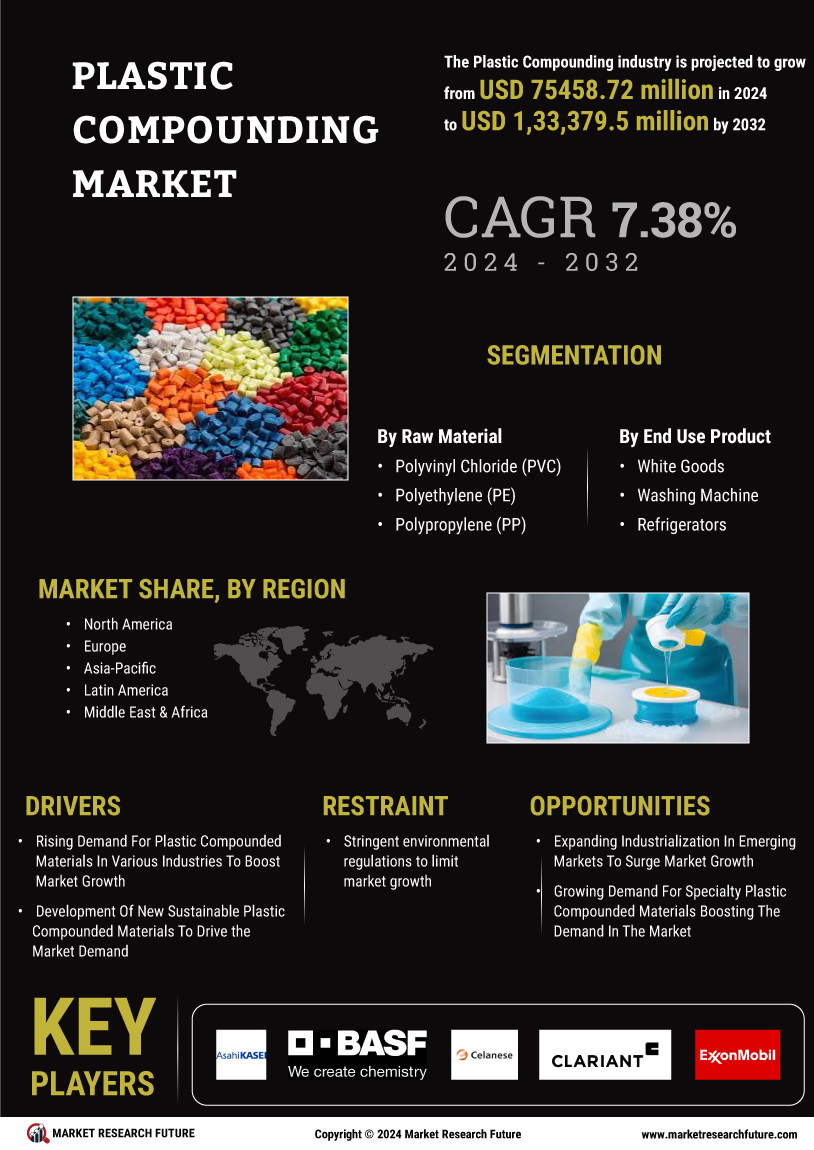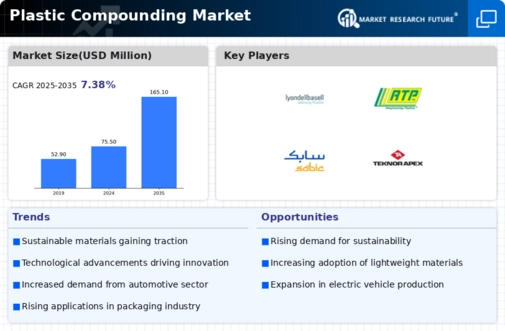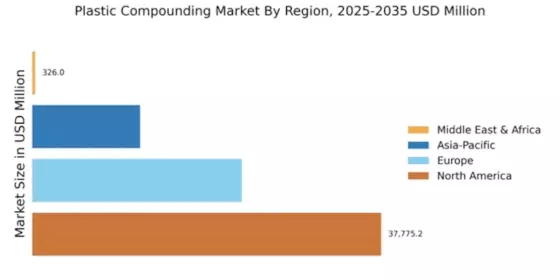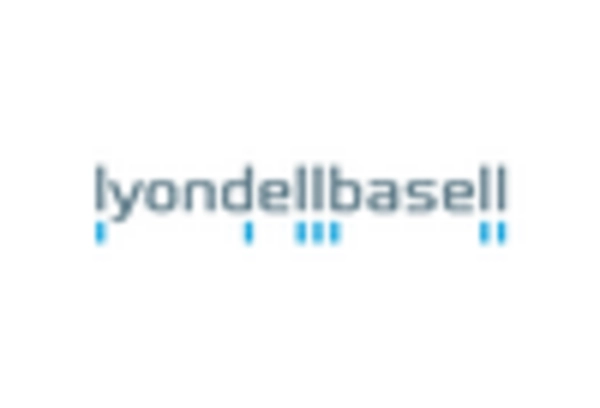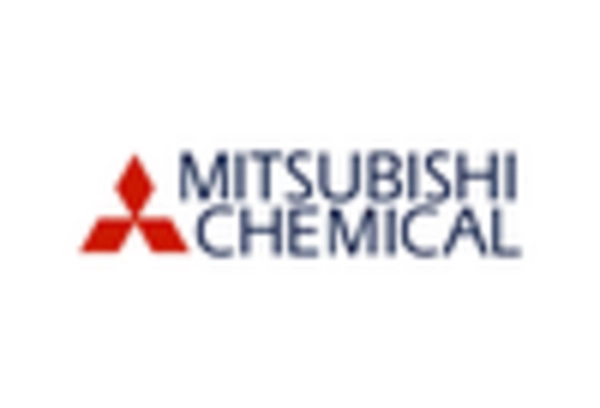Market Growth Projections
The Global Plastic Compounding Market Industry is projected to experience substantial growth over the coming years. With a market value expected to reach 75.5 USD Billion in 2024 and further expand to 165.1 USD Billion by 2035, the industry is poised for a robust trajectory. This growth is underpinned by a compound annual growth rate (CAGR) of 7.38% from 2025 to 2035, reflecting increasing demand across various sectors. The expansion is driven by factors such as technological advancements, sustainability initiatives, and the rising need for lightweight materials. These projections indicate a vibrant future for the Global Plastic Compounding Market Industry.
Regulatory Support and Standards
Regulatory frameworks and standards play a crucial role in shaping the Global Plastic Compounding Market Industry. Governments worldwide are implementing regulations that promote the use of high-quality, safe plastic compounds in various applications. Compliance with these regulations not only enhances product safety but also fosters consumer confidence. For example, the introduction of stringent safety standards in the food packaging sector is driving demand for specialized plastic compounds. As regulatory support continues to evolve, it is likely to create a conducive environment for market growth, contributing to the anticipated CAGR of 7.38% from 2025 to 2035.
Rising Demand for Lightweight Materials
The Global Plastic Compounding Market Industry experiences a notable surge in demand for lightweight materials across various sectors, particularly in automotive and aerospace. Manufacturers are increasingly adopting plastic compounds to reduce vehicle weight, thereby enhancing fuel efficiency and lowering emissions. For instance, the automotive sector is projected to utilize plastic compounds extensively, contributing to the market's growth. The industry's value is expected to reach 75.5 USD Billion in 2024, driven by this trend. As companies strive to meet stringent environmental regulations, the shift towards lightweight materials is likely to bolster the Global Plastic Compounding Market Industry significantly.
Sustainability and Recycling Initiatives
Sustainability concerns are becoming increasingly prominent within the Global Plastic Compounding Market Industry, prompting manufacturers to adopt eco-friendly practices. The push for recycling and the use of biodegradable materials are reshaping product development strategies. Companies are investing in research to create sustainable plastic compounds that minimize environmental impact while maintaining performance. For instance, the development of bio-based plastics is gaining traction, appealing to environmentally conscious consumers. This shift towards sustainability is expected to drive market growth, with projections indicating a market value of 165.1 USD Billion by 2035, as the industry aligns with global sustainability goals.
Growing Applications in the Electronics Sector
The Global Plastic Compounding Market Industry is witnessing increased applications in the electronics sector, where plastic compounds are essential for producing lightweight, durable, and heat-resistant components. With the rise of consumer electronics and smart devices, manufacturers are increasingly relying on plastic compounds for housings, connectors, and circuit boards. This trend is expected to drive substantial growth in the market, as the electronics industry continues to expand. The demand for high-performance plastic compounds is likely to contribute to the market's projected value of 75.5 USD Billion in 2024, as companies seek innovative solutions to enhance product performance and longevity.
Technological Advancements in Compounding Processes
Technological innovations in compounding processes are transforming the Global Plastic Compounding Market Industry. Advanced techniques such as twin-screw extrusion and reactive compounding are enhancing the efficiency and quality of plastic compounds. These innovations allow for better dispersion of additives and fillers, resulting in superior material properties. For example, the introduction of smart compounding technologies enables real-time monitoring and adjustments during production, ensuring consistent quality. As these technologies become more prevalent, they are expected to drive market growth, with projections indicating a market value of 165.1 USD Billion by 2035, reflecting a robust CAGR of 7.38% from 2025 to 2035.
